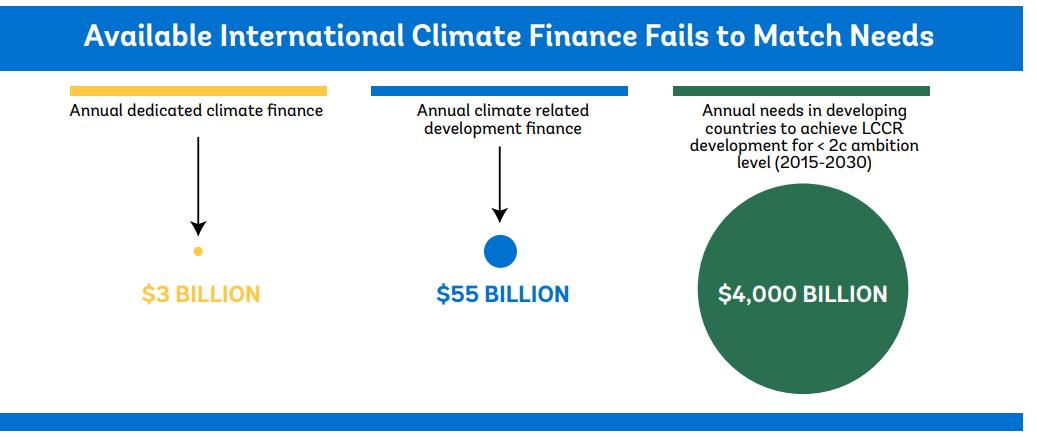International climate finance and carbon markets –opportunities and challenges

40th Annual Monetary & Trade Conference -
The Economics of Climate Change
Philadelphia, November 15, 2022
Klaus Oppermann, Senior Economist, The World Bank koppermann@worldbank.org

World Bank, https://openknowledge.worldbank.org/bitstream/handle/10986/33917/149752.pdf?sequence=2&isAllowed=y
Brown vs Green Economy - stylized
Non-climate externalities
Transition costs
Capex Opex
Climate externality Capex Opex Brown economy Green economy
Eight Sets of Climate Levers for Transformative Action
1. Project-Based Financing
Finance or project support to enable climate investments e.g. wind plant, climate resilient roads
5. Trade Policy
2. Financial Sector Reform
3. Fiscal Policy
4. Sector Priorities
6. Innovation and Tech Transfer
Development of new, more effective and cheaper green technologies e.g. demonstration plants, R&O, SME support, early/discounted financing
7. Carbon Markets
System to define and trade mitigation outcomes for cost efficient mitigation e.g. emission trading systems, baseline and crediting mechanisms
8. Climate Intelligence and Data
Knowing and planning tools to support policy and investment decisions e.g. 2050 low carbon resilience trajectories, NDC implementation plans
Financial sector regulations that catalyze green investment e.g. regulations for green bonds, climate risks in portfolio assessments
Setting taxes and adjusting spending priorities to support climate action e.g. green taxes, improved subsidy targeting, green procurement
Regulatory standards or information provision policies e.g. energy efficiency standards, building codes
Trade policies to encourage exchange of LCCR products e.g. carbon border tax adjustment, trade liberalization for LCCR products
Green financial sector reform – example: differentiation in capital requirement

https://openknowledge.worldbank.org/bitstream/handle/10986/38028/IDU0881e4d02027f504e120898502121116e2eb7.pdf?sequence=1&isAllowed=y

World Bank: https://openknowledge.worldbank.org/bitstream/handle/10986/25160/9781464810015.pdf?sequence=7&isAllowed=y Edmund, J. et all (2021): cost savings $300bn; flow volume $100bn, price $22/t.
Modelling 2030 Carbon market flows
https://www.worldscientific.com/doi/10.1142/S201000782150007X
Example: Results-based climate finance to enable carbon markets Barriers to carbon markets under the Paris Agreement: • Environmental integrity and non-alignment risk; • Compliance risks under currently lacking intertemporal flexibility; • Pricing risks; • Insufficient domestic technical and administrative capacity. RBCF to: • Set environmental and Paris alignment standards; • Guarantee off-take at floor price; • Build and test required MRV and administrative procedures. https://www.worldbank.org/en/topic/climatechange/brief/scale-scaling-climateaction-by-lowering-emissions




